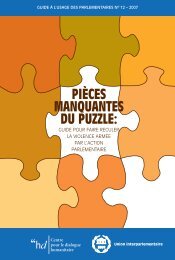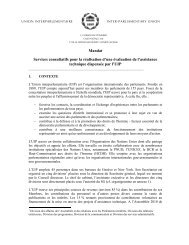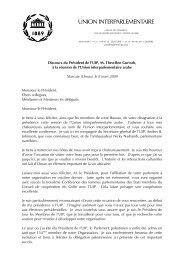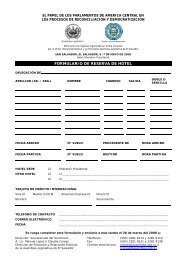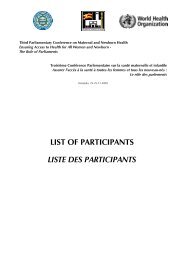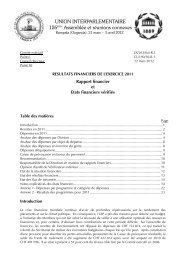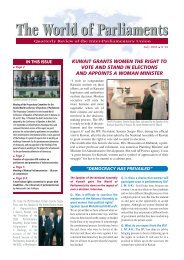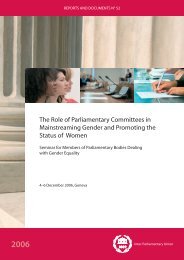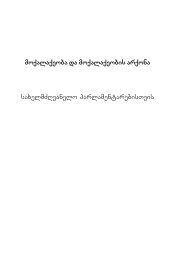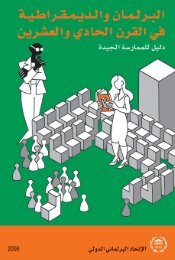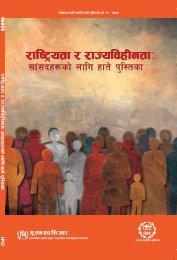MISSING PIECES - Inter-Parliamentary Union
MISSING PIECES - Inter-Parliamentary Union
MISSING PIECES - Inter-Parliamentary Union
You also want an ePaper? Increase the reach of your titles
YUMPU automatically turns print PDFs into web optimized ePapers that Google loves.
<strong>MISSING</strong> <strong>PIECES</strong><br />
3. Moratoria<br />
Voluntary and mandatory moratoria can often be effective ways to limit<br />
the proliferation of guns and ammunition. Unlike embargoes, moratoria<br />
do not necessarily imply punishment for actions or activities, and are<br />
preventive in nature. They can apply to a single country, to sub-regions,<br />
or entire regions; be initiated by importing or exporting states; and can<br />
cover only selected types of weapons. For example, a number of governments<br />
that are not party to the 1997 Mine Ban Treaty have moratoria on<br />
the export of anti-personnel mines. 25<br />
On 14 June 2006, Member States of the Economic Community of West<br />
African States (ECOWAS) signed the new ECOWAS Convention on Small<br />
Arms and Light Weapons. This instrument replaces the 1998 non-binding<br />
ECOWAS Moratorium on the Importation, Exportation and Manufacture<br />
of Small Arms and Light Weapons, which had proven incapable of preventing<br />
new supplies of guns and ammunition from entering West Africa. Among<br />
the many examples of violations, Côte d’Ivoire was known to have imported<br />
‘considerable amounts of military hardware, notably from China’. 26 The<br />
Convention now prohibits all international transfers of small arms within<br />
the sub-region unless a Member State obtains an exemption from the<br />
ECOWAS Secretariat. The Secretariat decides on an exemption based upon<br />
stringent criteria reflecting the obligations of all governments under relevant<br />
international law. The Convention also harmonises laws on private gun<br />
possession across the sub-region, requiring users to obtain a renewable<br />
license from their national authorities, and requiring proof of a genuine<br />
need for gun possession.<br />
4. Marking and tracing<br />
One challenge to the enforcement of arms controls is the difficulty of determining<br />
the origin of the guns that are misused in violent conflict and human<br />
rights crisis zones around the world. The UN Firearms Protocol provides<br />
that guns must be marked at the point of manufacture, import, and transfer<br />
from government into private hands. Yet as noted above the Firearms<br />
Protocol only covers commercial transfers, thereby exempting state-to-state<br />
transactions. Further, it is limited to barrel firearms.<br />
As part of the PoA, governments committed themselves to developing<br />
an international regime on the marking and tracing of small arms. The<br />
<strong>Inter</strong>national Instrument to Enable States to Identify and Trace, in a Timely<br />
and Reliable Manner, Illicit Small Arms and Light Weapons was formally<br />
52



